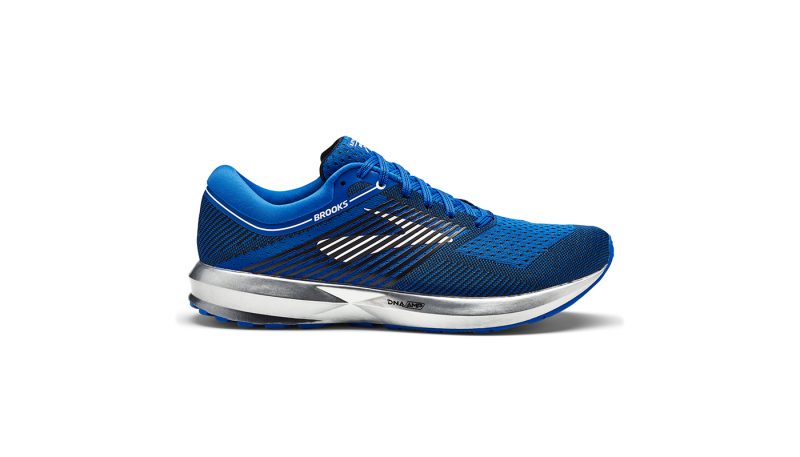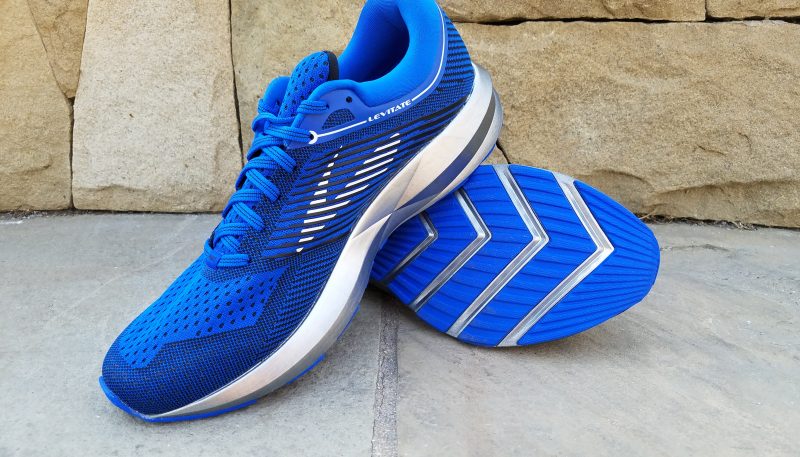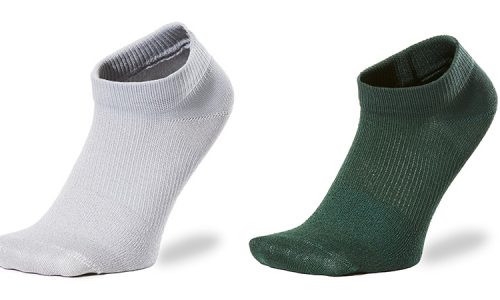Home » Gear Reviews » Running » Running Shoes » Road Running Shoes » Cushioned Running Shoes » Brooks Levitate
Brooks Levitate Review
March 22, 2018





























 86
86 The Good
- Plush cushioning
- Soft responsive ride
- Durable midsole
- Comfortable padding along collar
The Bad
- Extremely sole heavy
- Tight fit through metatarsals
- Not suited for up-tempo running
- Two-ply upper can overheat
The Brooks Levitate has it all in terms of comfort; plush cushioned underfoot feel, incredibility soft and form-fitting upper and just an overall pleasure to have on your feet. As a new addition to the Brooks already solid lineup of running shoes, the Levitate is made for a neutral runner who is willing to sacrifice a little performance for lasting comfort.
Comfort
From the moment you slide your foot into the Levitate, it’s easy to tell, something is uniquely different about the midsole compared to Brooks Super DNA. Brooks introduces a completely new midsole compound called DNA AMP extremely soft, yet springy midsole foam. Whether you’re standing, walking or running, the DNA AMP is one of the more comfort midsoles to have between your feet and the ground.
The entire upper is well crafted and eye-catching. Heavy padding lined with a silky moisture wicking fabric covers the entire back end of the upper, extending up and over the collar. This smooth padding can be seen on other Brooks cushioned shoes such as the Glycerin 15 and Ghost 10 and creates a welcoming entry point for the shoe and guards against rubbing.
Inside the upper is a two-inch long seam located around the mid-foot. This seam intergrades the nicely padded tongue and smooth sock liner with a bootie-style construction for the front end of the upper. Here, Brooks utilizes a circular knit process to engineer a soft-feeling upper, which they call Fit Knit. The Fit Knit upper is tightly stretched throughout the toe box and is not particularly stretchy. This helps the upper holds integrity but also causes it to feel a tight for wider feet. This lack of plasticity in the upper may cause some impingement in the metatarsals for those with wide feet.
Fit
For the most part all our testers agreed the Levitate to fit true to size. One tester did note the shoe to fit snug through the midfoot, but never noted experiencing any issues during the run. Comparing to other Brooks models, the Levitate certainly has a narrower fit then the Brooks Glycerin and Ghost. The upper is low volume and doesn’t provide much stretch for the metatarsals.
While some may find the lower volume and lack of stretch in the upper to be constricting, others will enjoy the sense of security a snug fit provides. There was absolutely no slippage inside the shoe. Syncing down on the laces locked the foot in the saddle due to the 3D print overlays. A stiff heel cup with generous padding below the Achilles and around the ankle bone made the back end of the shoe snug without the slightest of lift as the heel leaves the ground.
Responsiveness
The holy grail of midsoles is to design one that’s super cushioned, yet still super responsive and Brooks is getting slower to finding that holy grail with DNA AMP. Unlike other ultra-soft midsoles, such as Adidas’ Boost and Saucony’s EverRun, where downward force can be dispersed in all directions, including out the sidewalls, Brooks encases the polyurethane-based midsole with a thin layer of thermoplastic polyurethane (TPU) to prevent a loss of energy out the sidewalls. Noticeable by what looks like silver spray paint on the midsole, this thin TPU lining is tough to resist puncture and abrasion, which speaks to its ability to keep energy from sapping out the sidewalls.
Unfortunately that lively energetic midsole is a bit overshadowed by the shoe’s heavy weight. While tester’s agreed the midsole was lively and a pleasure to run in they felt the heavy weight of the shoe seemed to want to keep the shoe anchored close to the ground instead of springing it back upward. The Levitate seemed to lack the pop one would expect from a highly responsive shoe.
Speed
Since weight directly affects a shoes ability to be speedy, the Levitate scored low here, contributing to what testers thought was one of the slowest shoes tested this run. Getting the Levitate to quickly spin cycles through the gait was a chore.
Coming in at a hefty 11.2oz for men and 9.7oz for women, the Levitate is almost a full ounce heavier then Brooks other popular cushioned trainers, the Glycerin and Ghost. All of our testers commented about how heavy the Levitate felt, recommending only pulling them out on slower paced days and long runs when comfort tops speed.
The 8mm heel drop also contributed to the Levitate preference towards slower to moderate paced runs. It’s not that it felt heel heavy, but rather the sweet spot feel somewhere between the heel and mid-foot. Those that naturally roll off the toe may find between the 8mm drop and heavy weight annoying when getting down toward hard workout paces.
Ride Quality
There’s no doubt the Brooks Levitate is a fun riding shoe with a uniquely pleasurable midsole experience that’s unlike any other we’ve tested. Perhaps the biggest noticeable difference between the Levitate and other Brooks cushioned models is how the Levitate feels underfoot, which is highlighted by an eye-catching silver midsole.
In search of the ultimate bled of cushioning and energy returning responsiveness, Brooks looked for outside help from BASF, the world’s largest chemical company. This collaboration between the two lead to the introduction of a new polyurethane (PU)-based cushioning system, called DNA AMP. There’s no doubt Brooks is onto something with the DNA AMP. The new midsole seems to offer qualities the Super DNA can not, mainly the ability to avoid sapping energy.
Testers also noted the DNA AMP to be super-durable and consistent. The midsole’s integrity seemed to stay true even as the miles wracked up. The outsole design is simple, with 4 pointed groves and an arrow to allow for good flexibility both heel-to-toe and side-to-side that allows the shoe to move naturally
The ideal runner to get the most out of the Levitate is medium to heavy size who tends to strike somewhere towards the rear to midfoot and keeps the pace modest. Those needing any stability at all should shy away. An extremely narrow waist in the midsole could create some instability under the arch.
Each summer and winter when shoe companies release their latest models Gear Institute receives the top shoes and puts each through an extensive testing process. A team of five male and female testers put each shoe through the test of miles over terrain such as concrete, asphalt, grass, dirt and track. Each shoe is judged on five categories: Comfort, Fit, Responsiveness, Speed and Ride Quality and given a score of 1 to 10, with 10 being perfect.
Testing protocol for road running shoes involves an extensive hands-on process across multiple testers over a period of at least two months. Each tester is avid runner, running over 30 miles per week over varying terrain including but not limited to concrete, asphalt, grass, track and dirt. The testing team is structured with a team lead and several wear testers.
Cory is a Santa Barbara, CA based athlete, online running coach and freelance journalist specializing in running and climbing related content and gear review.




















